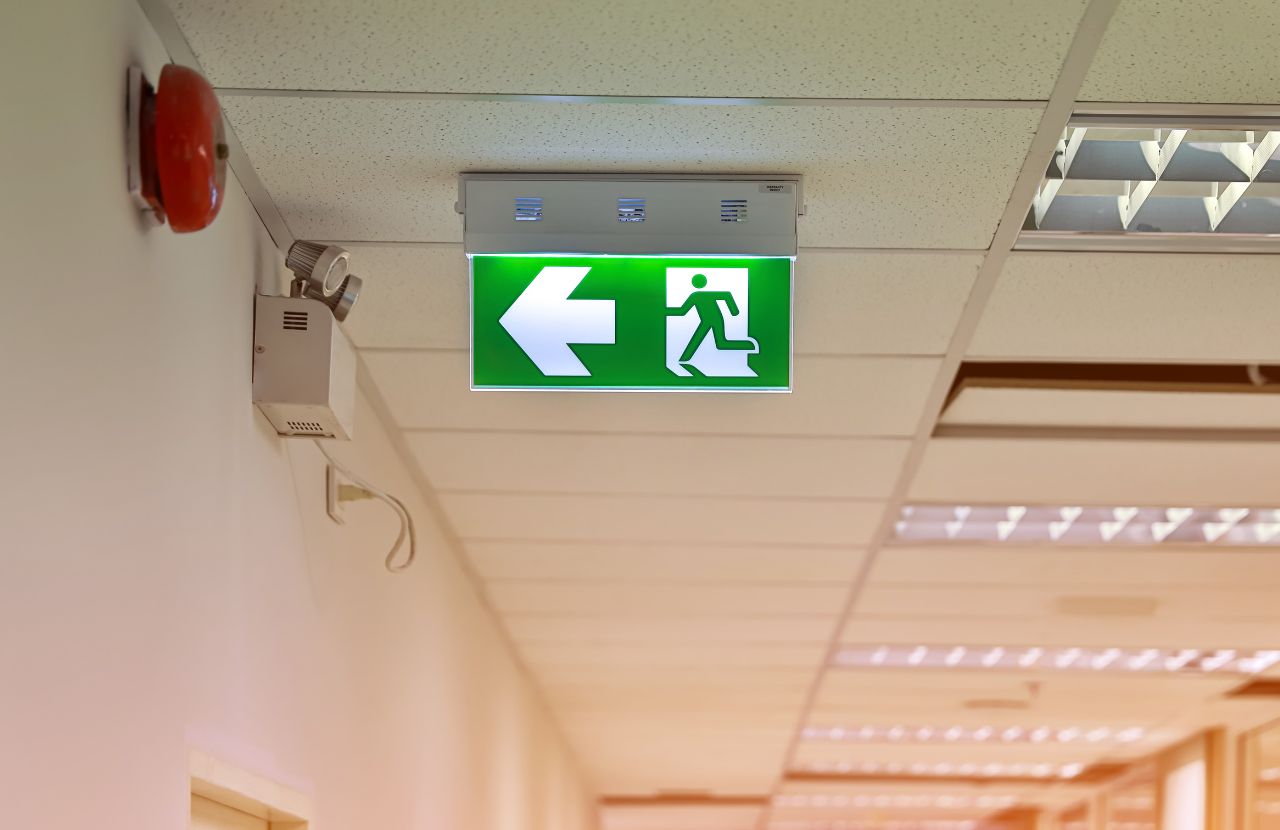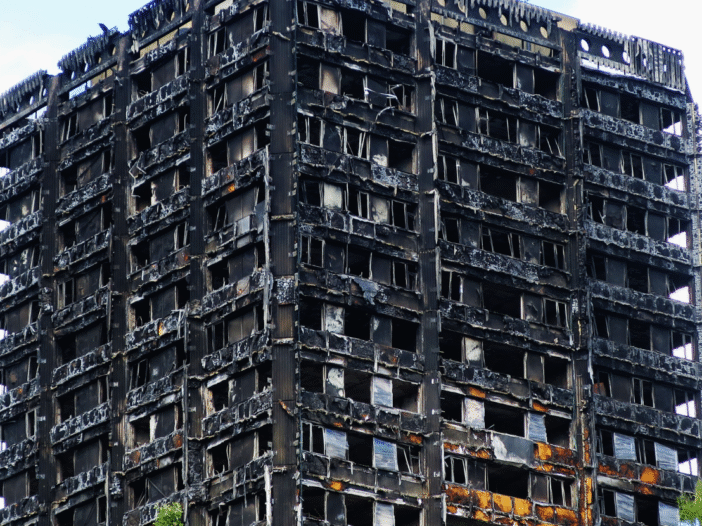
Fire marshals (or fire wardens) play a vital role in protecting people’s lives and safeguarding organisations from the harm that a fire can cause. To carry out their roles effectively, fire marshals must undergo additional fire safety training. In this guide we discuss a fire marshal’s duties, what fire marshal training is, and why specialised fire marshal training is essential.
What are the duties of a fire warden/fire marshal?
It is a fire marshal’s primary responsibility to make sure safety measures are in place to remove or reduce the risk of fire, and to coordinate an evacuation if there is a fire. The day-to-day responsibilities of a fire marshal vary depending on the size and type of organisation.
What is the difference between a fire marshal and a fire warden?
There is no difference between a fire marshal and a fire warden.
How many fire marshals do you need in an office?
CFPA-E Guideline No 11: 2015 F (p. 6) recommends that 2% of staff per fire section, per shift are fire marshals, with a minimum of two fire marshals per floor. The guidelines have been produced to set out standard best practices for the countries of CFPA Europe.
However, the percentages are guidelines only and there is an accompanying note that states, ‘Numbers to be decided by the Fire Protection Manager or the Fire Safety Coordinator and to be dependent upon the nature and scale of the specific risks’.
To work out how many fire marshals any type of premises requires you need to balance the level of fire risk in your particular organisation, the number of people on the premises, the number of floors and several other factors.
Level of fire risk
There is no specific legal definition of a low, medium, or high fire risk for organisations because it depends on so many different factors, but we provide a general guide below.
A fire risk assessment conducted by a competent fire risk assessor will identify the hazards and risks specific to your premises, people and business activities to accurately gauge the level of risk.
Low fire risk
In organisations with low fire risk, there are few highly flammable or combustible materials present. Heat sources are minimal or well-contained, and good housekeeping practices are maintained to prevent the accumulation of fire hazards.
The building is usually constructed with brick or other fire-resistant materials, reducing the likelihood of a fire spreading rapidly. There are no high-risk groups on the premises, such as individuals with limited mobility or young children, so in the event of a fire everyone can escape quickly and safely.
Medium fire risk
Medium fire risk means there may be some combustible or flammable materials and heat sources present. The building construction may not be entirely brick or stone, which could contribute to the spread of fire.
There might be certain high-risk areas within the premises, such as kitchens, where fire hazards are more likely to occur.
However, the overall fire risk is manageable, and people can still escape in the event of a fire. Adequate fire safety measures and evacuation plans are in place to mitigate the risks associated with potential fire incidents.
High fire risk
Organisations with a high risk of fire are likely to have a lot of combustible or flammable materials and multiple heat sources.
The building layout may be challenging, with obstacles that make it harder for people to escape if there is a fire. Construction materials used may not be brick or stone, increasing the risk of fire spreading quickly.
There may be a number of high-risk individuals, such as elderly or disabled people, who may require assistance during evacuation. There may also be regular visitors to the building who are not familiar with the area.
Stringent fire safety measures need to be put in place, including fire suppression systems and thorough evacuation plans, to minimise potential harm and property damage.
Number of people
As a rough guide you need 1 fire marshal for every 50 people in a low-risk building, 1 fire marshal for every 20 people for a medium risk building, and 1 fire marshal for every 15 people in a high risk building. However, the number of fire marshals you need depends on all the factors discussed in this article.
CFPA-E Guideline No 11: 2015 F provides minimum guidelines for the percentage of fire marshals required per numbers of staff, depending on the industry sector and level of fire risk.
Number of floors
You need at least one fire marshal on each floor of a building and will require more on floors where there is a greater risk of fire, a larger number of people, or where there are vulnerable people who may take longer to evacuate in the event of a fire.
Other factors
There must be enough fire marshals appointed to ensure people’s safety is protected if one or two fire marshals are on holiday or unwell.
If employees are on the premises at different times, you need fire marshals to cover every shift.
What specialised training does a fire marshal need?
Under the Regulatory Reform (Fire Safety) Order 2005 employers must provide adequate fire safety training for all employees:
‘The training…must…include suitable and sufficient instruction and training on the appropriate precautions and actions to be taken by the employee in order to safeguard himself and other relevant persons on the premises.’
The Risk Assessment Guidance to the Regulatory Reform (Fire Safety) Order 2005 (p.22) states that fire marshals who take a more active role in fire safety ‘should be provided with more comprehensive training.’
Fire marshal training builds on initial training by covering more advanced topics including the responsibilities of fire marshals, conducting fire risk assessments, implementing fire evacuation plans, using fire extinguishing equipment, and managing evacuation drills. The objective is to equip designated personnel with the knowledge and skills to take a leadership role in fire safety.
How long does fire marshal training remain valid?
Under the Regulatory Reform (Fire Safety) Order 2005 training ‘must be repeated periodically where appropriate.’
Fire marshal certificates are valid for 3 years. However, fire marshals working in high risk work places should refresh their training annually to ensure they retain knowledge and skills and that they are up to date with best practice.
Training should also be refreshed when there are changes within an organisation that affect fire risk, such as new employees with additional needs, or changes to business activities. Changes in legislation may also impact fire warden training needs.
Can you do fire marshal training online?
Online fire marshal training is designed to support hands-on learning to ensure designated personnel understand what their role is and have the deep knowledge and essential skills needed to carry out their duties competently.
Our IOSH Approved online fire marshal training provides comprehensive coverage of essential topics related to fire safety and emergency response.
Developed by experienced fire safety consultants, the course covers the responsibilities of fire wardens, how fires originate and spread, how to prevent fires and reduce risks, how to implement a fire emergency plan, lead evacuations and coordinate with emergency services.
Participants learn about the importance of identifying primary and secondary evacuation routes within a building, emphasising the significance of maintaining clear and unobstructed pathways for swift emergency evacuations.

Rob Sherman
Director of Fire Safety
